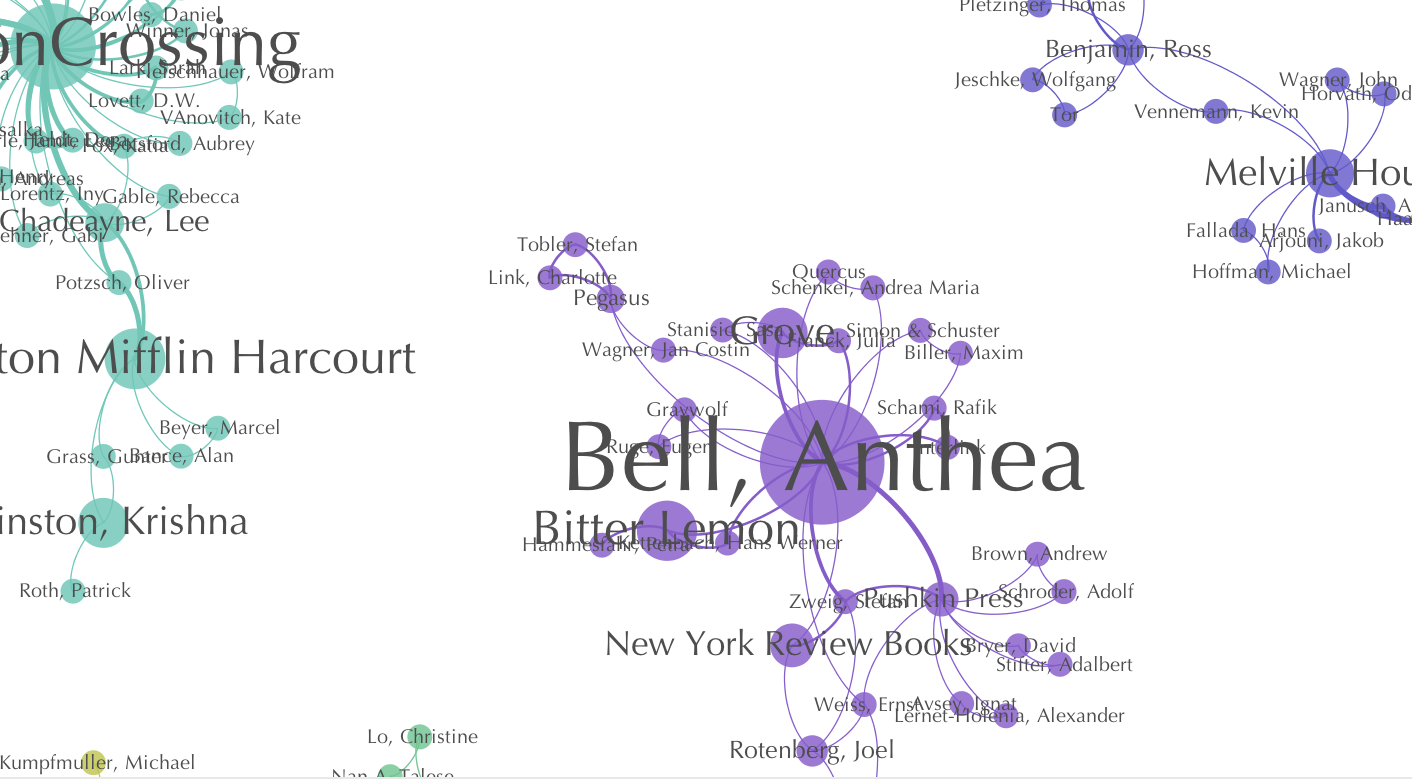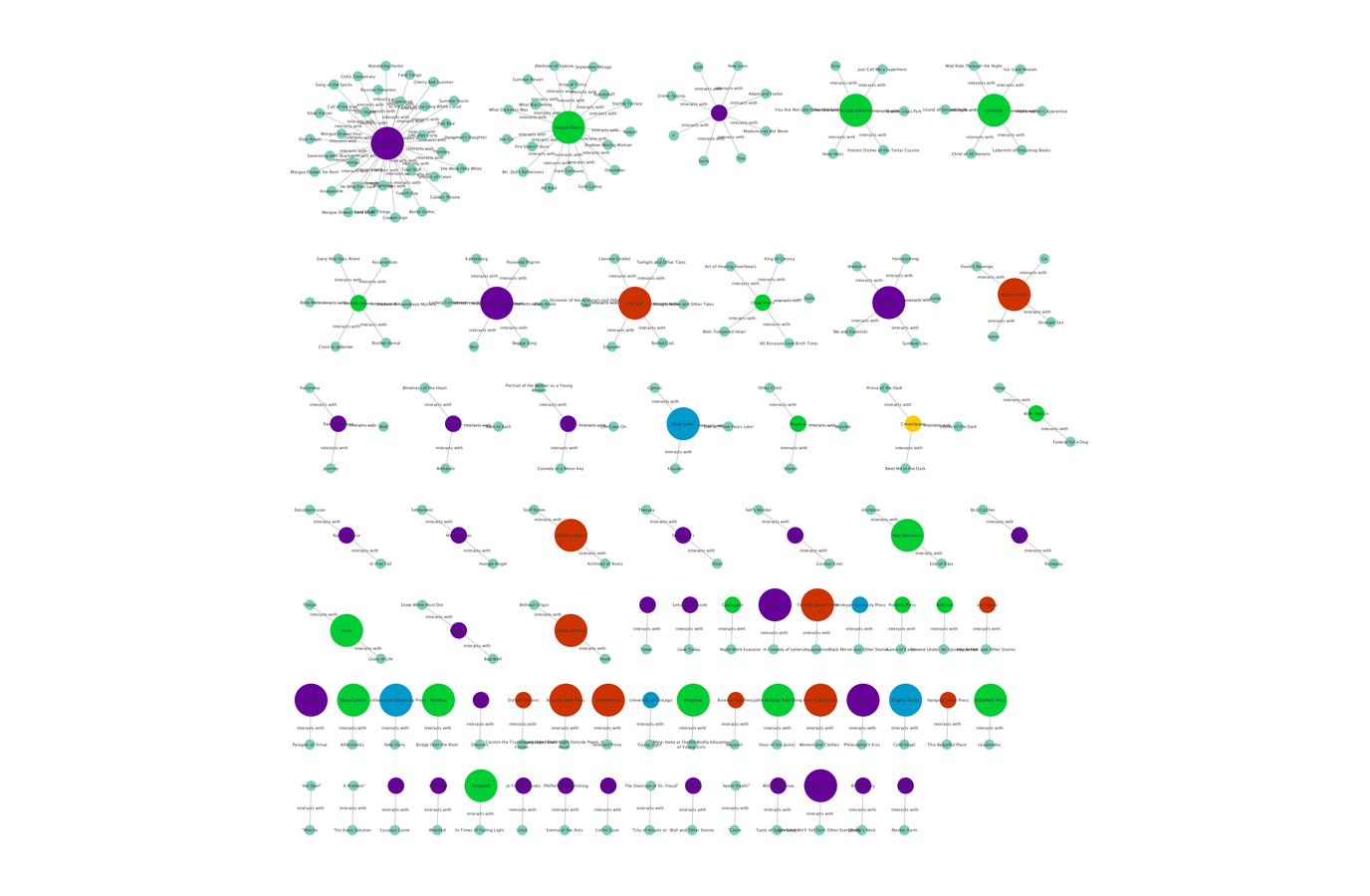Translating Networks
Exploring Literary Translation Communities through Graph Theory
Dawn Childress @kirschbombe
SHARP 2016 · Paris, France
translatingnetworks.github.io
Slides are hosted online here: http://dawnchildress.com/presentations/sharp16
Understand communities, connections, and influences in literary translation through graph theory.
Explore the application of social-scientific and computational methods to book and publishing history research.
Purpose
What we're working on now...
- Collecting & enhancing datasets
- Exploring & analyzing our data
- Building the database infrastructure
The Team
Dawn Childress, UCLA
Thomas O. Beebee, Penn State
Martin Klein, UCLA
Sean Weidman, Penn State
Supported by
UCLA Library and the Center for Humanities and Information (Penn State)
- Three Percent's Translation Database, University of Rochester (works, people, publishers, geographic, temporal) - 2008-2016
- Harvesting & reconciliation from other databases (DBPedia, LCSH, VIAF)
- Manually enhancing data, adding missing facets (gender, nationality, affiliation)
- Data modelling
Collecting & enhancing the data
- defining publisher 'types': academic, trade, small press, independent, self-publishing
- also defining translator 'types' & genre/topics for the literary works
- there are many other ways we might choose to codify entity attributes
Defining genres & types
- started as an attempt to learn about network analysis (2014)
- exploring the data led to new questions - we wanted to dig a little more
- how far can we look beyond the target texts? (Long, 2015)
- how might we bridge literary theory and text with computational methods? (Moretti, 2013)
- historical & typological
Foundations

German translation communities (2008-2014), using Gephi.

German translation communities (2008-2014), using Gephi.
Language distribution over time (2008-2014).

Publisher types by focus on translation, using Cytoscape.

- graph database (Neo4j)
- graphical interface(s) for exploring the database
- interfaces for contributing to and querying the database
- (hopefully) a network of scholars and technologists interested in the work
- praxis project for researchers and students who want to learn about literary communities, network analysis, databases & ontologies
What we're building...
- semantic unit is a 'triple' (S - P - O)
- all entities and their attributes can potentially be nodes
- can define/add more relationship types over time
- more flexibility in how we query or visualize the data
Why a graph database?
- expand scope of the dataset (temporal, formats, relationships, affiliations)
- interactive queries and visualizations
- open the data for scholar contributions (to data & to research)
- partner with international community to add other target languages
What we'd like to do next...
-
Long, Hoyt. "Fog and Steel: Mapping Communities of Literary Translation in an Information Age. The Journal of Japanese Studies, Volume 41, Number 2, Summer 2015, pp. 281-316.
-
Casanova, Pascale. The World Republic of Letters. Cambridge, Mass.: Harvard University Press, 1999.
-
Moretti, Franco. “Conjectures on World Literature,” New Left Review, Vol. 1 (2000), pp. 54–68
-
Moretti, Franco. “‘Operationalizing’: or, the Function of Measurement in Modern Literary Theory,” Literary Lab Pamphlet 6 (December 2013)
Notes
Translating Networks can be found online here:
Website: https://translatingnetworks.github.io
GitHub: https://github.com/translatingnetworks
Open Science Framework: https://osf.io/dj3mg/
Slides are hosted online here: http://dawnchildress.com/presentations/sharp16